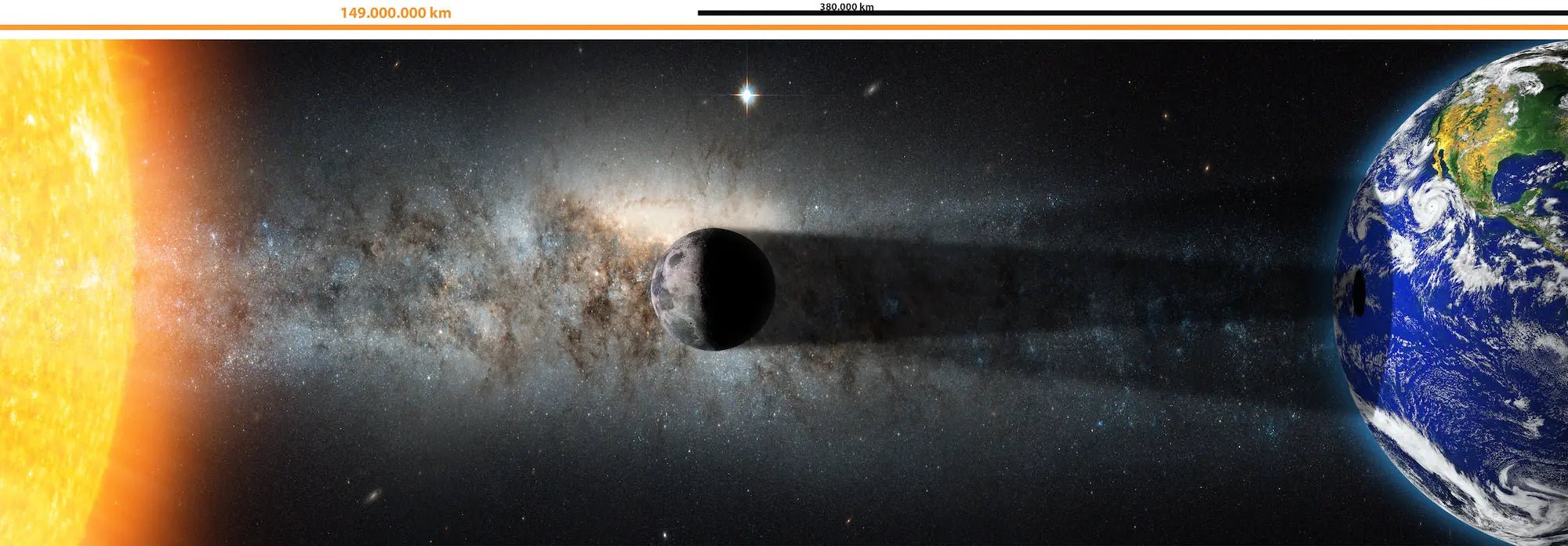Eclipses are remarkable celestial events that occur when one astronomical body passes into the shadow of another, resulting in a temporary dimming or obscuring of the first body. Two main types of eclipses are solar eclipses and lunar eclipses. These phenomena are governed by the principles of celestial mechanics and the relative positions of the Earth, the Moon, and the Sun.
A solar eclipse transpires when the Moon passes between the Earth and the Sun, casting a shadow onto Earth's surface. The Moon's orbit is slightly tilted relative to Earth's orbital plane, which means that most of the time, the Moon appears slightly above or below the Sun from our perspective. However, when the Moon, Earth, and Sun align in such a way that the Moon is directly between the two, a solar eclipse occurs. This alignment is called a syzygy.
Solar eclipses consist of two main parts: the penumbral shadow and the umbral shadow. The penumbra is the outer region of the shadow, where only a portion of the Sun's light is blocked. Within the penumbral region, observers witness a partial solar eclipse, where the Sun is only partially obscured. The central and darker part of the shadow is the umbra, where the Sun's light is completely blocked, resulting in a total solar eclipse for those within the path of totality.
On the other hand, a lunar eclipse takes place when the Earth comes directly between the Sun and the Moon. This alignment allows Earth's shadow to be cast onto the Moon's surface. Like the Moon's orbit, Earth's shadow has two parts: the outer penumbral shadow, where the Moon slightly darkens, and the inner umbral shadow, where a more noticeable darkening occurs.
During a lunar eclipse, when the Moon enters Earth's umbral shadow, its appearance changes dramatically. It often takes on a reddish hue, which has led to the term "blood moon." This reddening is caused by Earth's atmosphere bending and refracting sunlight. Longer wavelengths, such as red and orange, are less scattered by the atmosphere and are bent toward the Moon, illuminating it during the eclipse.
The occurrence of eclipses is not constant and follows a cycle called the Saros cycle. This cycle, lasting about 18 years, 11 days, and 8 hours, is the period after which the Sun, Earth, and Moon return to nearly the same relative geometry, allowing for similar eclipses to occur. However, due to the three-dimensional nature of their orbits, each Saros cycle produces a slightly different alignment, resulting in a shift in the geographic locations where total or partial eclipses are visible.
In conclusion, the scientific principles behind eclipses are based on the interplay between the relative positions and motions of the Sun, Earth, and Moon. These events are captivating demonstrations of celestial mechanics and serve as reminders of the intricate dance of celestial bodies in our solar system. Observing and understanding these principles not only provide insights into the mechanics of the universe but also offer a sense of wonder and awe at the beauty and complexity of the cosmos.



Share:
Where You Will Be Able to See the October 2023 Eclipse
Duration of the October 2023 Eclipse